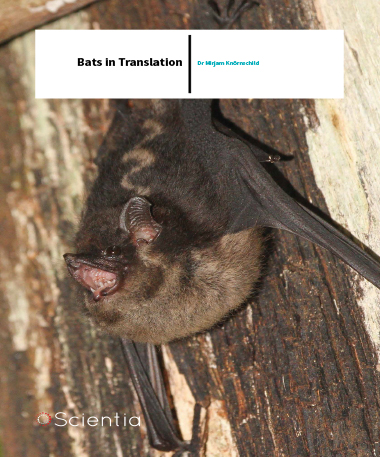Dr Mirjam Knörnschild – Bats In Translation
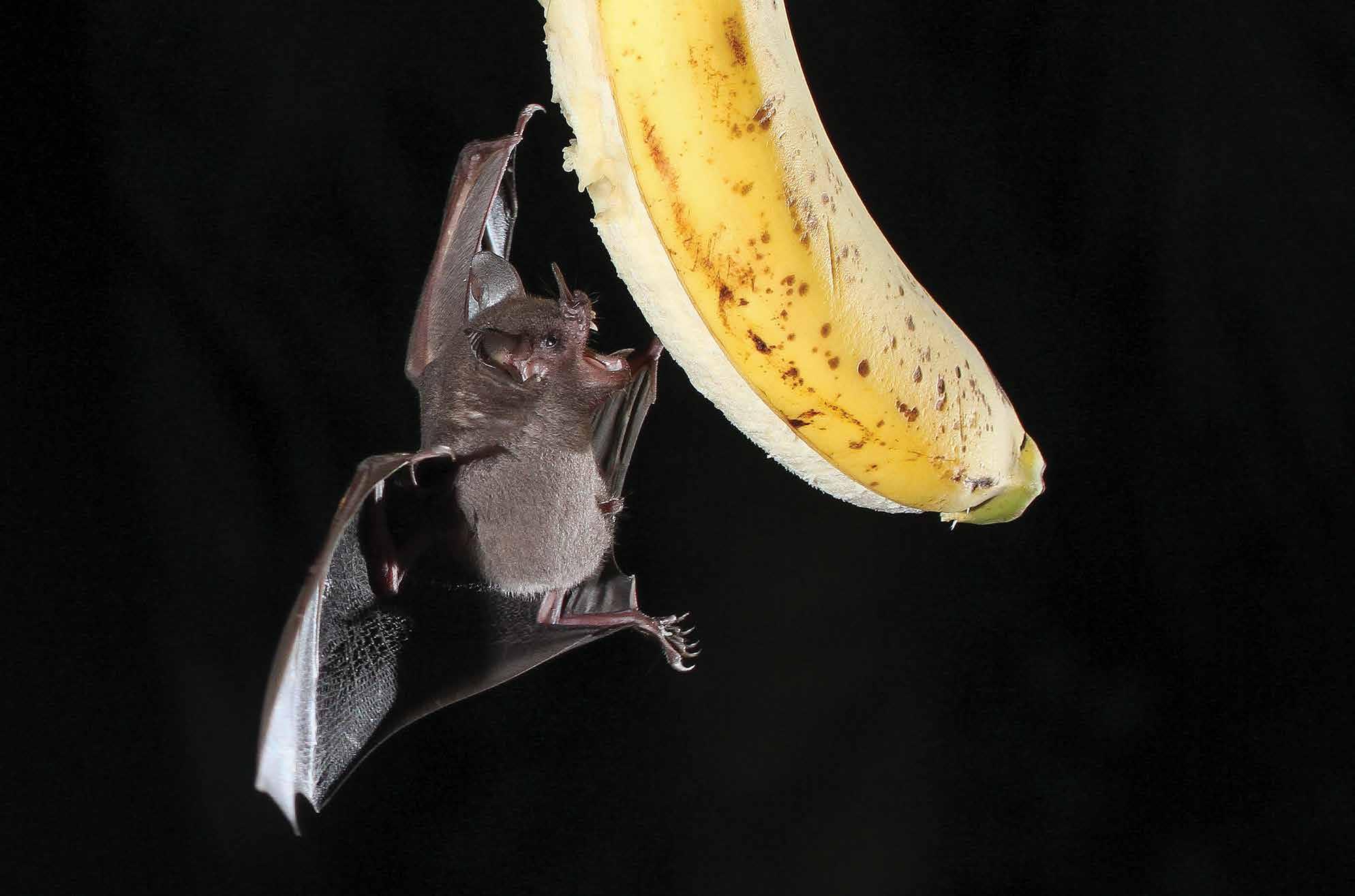
Social and Vocal Complexity
According to the Machiavellian intelligence hypothesis, the driving force in the evolution of the human intellect was social expertise, which enabled our ancestors to cooperate with social group members or to manipulate them. Since social interactions require communication, the complexity of vocal communication signals should be tightly linked to the complexity of the respective social system. This positive feedback loop between social and vocal complexity has been investigated in primates, rodents, mongooses and certain birds. Bats, however, have not been thoroughly studied with regard to their communicative abilities, despite the fact that their taxon is extremely species-rich, comprising over 1,300 species, and that they exhibit a wide range of different social structures and mating systems. Moreover, their sophisticated echolocation behaviour is a prerequisite for a versatile vocal communication system. Dr Mirjam Knörnschild and her research group at the Free University Berlin in Germany work with wild bats to understand the evolutionary interplay of social and vocal complexity. ‘We study how, what and why bats communicate with conspecifics,’ Dr Knörnschild states. ‘In particular, we focus on one family, the Emballonurids or sac-winged bats.’ This insectivorous bat family occurs in the tropics and subtropics of both the Old and the New World. One member, the greater sac-winged bat Saccopteryx bilineata, is one of the most thoroughly studied bat species worldwide. Saccopteryx bilineata has a complex social organisation. Related males compete for access to females by defending adjacent roosting territories in perennial day-roost colonies. Subordinate males queue for territory access in their birth colony and participate in defending their colony against unrelated immigrant males. Females base their mate-choice decisions on multimodal male courtship displays and seem to evaluate male quality year-round. This intense sexual selection pressure has led to elaborate male vocalisations used for repelling rivals and attracting mates. The level of social and vocal complexity observed in Saccopteryx bilineata is in stark contrast to the comparatively simple vocalisations of socially monogamous members of the sacwinged bat family, which Dr Knörnschild’s group also studies. While intermediate levels of social and vocal complexity can be found in various species of sac-winged bats as well, Saccopteryx bilineata certainly represents the far end of the complexity continuum. No other member of this bat family possesses a similarly sized vocal repertoire, acquired partly though vocal learning and containing some of the most elaborate male songs found in bats to date.
Culturally Transmitted Song Dialects
Male bats of several species sing just like birds do, even though most of the songs’ sound energy is concentrated in the ultrasonic range and thus not audible to humans. Bat song, just like bird song, contains information about male identity and quality. Moreover, the syllable structure and phonological syntax of bat song can be as rich and complex as bird song. Scientists have known since the 1970s that some bats sing, but only recently the ultrasonic recording equipment became robust and portable enough to conduct in-depth field studies on singing bats in the wild. ‘Studying bat communication in the wild is still a fairly new field that is rapidly advancing,’ Dr Knörnschild explains. ‘It’s really exciting to be part of this scientific community.’ Male Saccopteryx bilineata sing mainly at dusk and dawn while perching in their territories. In contrast to many birds, these bats sing year-round even though singing is most intense during the mating season. One song type, the territorial song, is directed mainly at male rivals in the vicinity, while the other song type, the courtship song, is used to address individual females roosting in a male’s territory. Territorial songs are especially well suited for playback experiments because males readily engage in counter-singing activities with real and virtual opponents. Dr Knörnschild’s group found evidence that males encode aggressive intentions in the pitch of territorial songs (a lower pitch indicates a more serious dispute than a higher pitch), that the daily song rate of males is influenced by the number of rivals to repel and females to guard (males sing more when they have more to lose) and that singing at dawn not only repels rivals but also facilitates the immigration of new females into existing colonies. The latter finding indicates that Saccopteryx’ territorial songs, just like the majority of bird songs, has the dual function of rival deterrence and mate attraction. But the similarity between bird song and bat song does not end at their function. Even their acquisition process is similar. Comparable to oscine songbirds, the territorial song of Saccopteryx bilineata is learned by imitating the song of a tutor male. Throughout ontogeny, bat pups listen daily to male songsters in their vicinity and learn how to sing. Pups imitate the tutors’ songs precisely but not perfectly, and the combined weight of small copying errors and subtle social modifications of song structure leads to the existence of distinct regional song dialects. These song dialects are culturally transmitted, passed on to the next bat generation through vocal imitation. ‘Since territorial songs are sexually selected signals, regional song dialects could function as reproductive barriers between different populations,’ Dr Knörnschild emphasises. ‘We are currently studying how the cultural transmission of song dialects could facilitate speciation.’ Female Saccopteryx bilineata, which leave the social group they were born in as sub-adults, rely on male territorial songs to find new colonies. It is thus conceivable that culturally transmitted song dialects constitute dispersal barriers for females, limiting gene flow between adjacent populations. Cultural transmission in animals is widely viewed as a potent ‘second inheritance system’ complementing genetics. The regional dialects in Saccopteryx bilineata’ songs seem to fit right in.
‘I am especially intrigued by the versatile acoustic communication system of bats and how deciphering bats’ vocalisations allows us to get glimpses into their cognitive abilities and social relationships’

Bats for Biolinguistics
Bats’ ability for vocal imitation is by far not the only reason why their ontogenetic development is interesting. Saccopteryx bilineata pups babble conspicuously during vocal ontogeny, producing long strings of vocalisations in which elements from the adult vocal repertoire are repeated, juxtaposed and modified. This juvenile behaviour, sometimes also called vocal play, is reminiscent of the canonical babbling found in human infants. Babbling is considered to be crucial for mastering the phonological challenges of vocal repertoire acquisition in different species, including humans. However, babbling behaviour is severely under-studied in non-human mammals. Apart from humans, Saccopteryx bilineata is the only known mammal so far that is both a babbler and a versatile vocal imitator, making it extremely interesting for biolinguistic studies.
The newly emerging field of biolinguistics tries to understand how and why the human language faculty evolved, an endeavour of exceeding difficulty. From a biolinguistic perspective, the crucial components of human language (e.g. vocal imitation, syntax, semantics, etc.) share the general properties of other biological systems and should thus be studied using a comparative approach. A fundamental question in this context is which aspects of language are uniquely human and which homologous or analogous traits can be found in animal vocalisations. Bats are a highly promising group for biolinguistic studies. Their ability to navigate and hunt via echolocation is a preadaptation for sophisticated vocal communication, and researchers are just beginning to understand the underlying complexity of the social vocalisations of bats. Moreover, many bats are gregarious and long-lived, which gives individuals ample opportunities to learn from conspecifics. Dr Knörnschild’s group is convinced that studying bats will yield valuable insights into human language evolution, on both proximate and ultimate levels. ‘Our aim is to establish bats in biolinguistic research,’ Dr Knörnschild says. ‘In our studies, we are combining state-of-the-art methods from behavioural ecology and (neuro-)genetics. Eventually, this will help us to better understand which preadaptations contributed to the evolution of the human language faculty.’
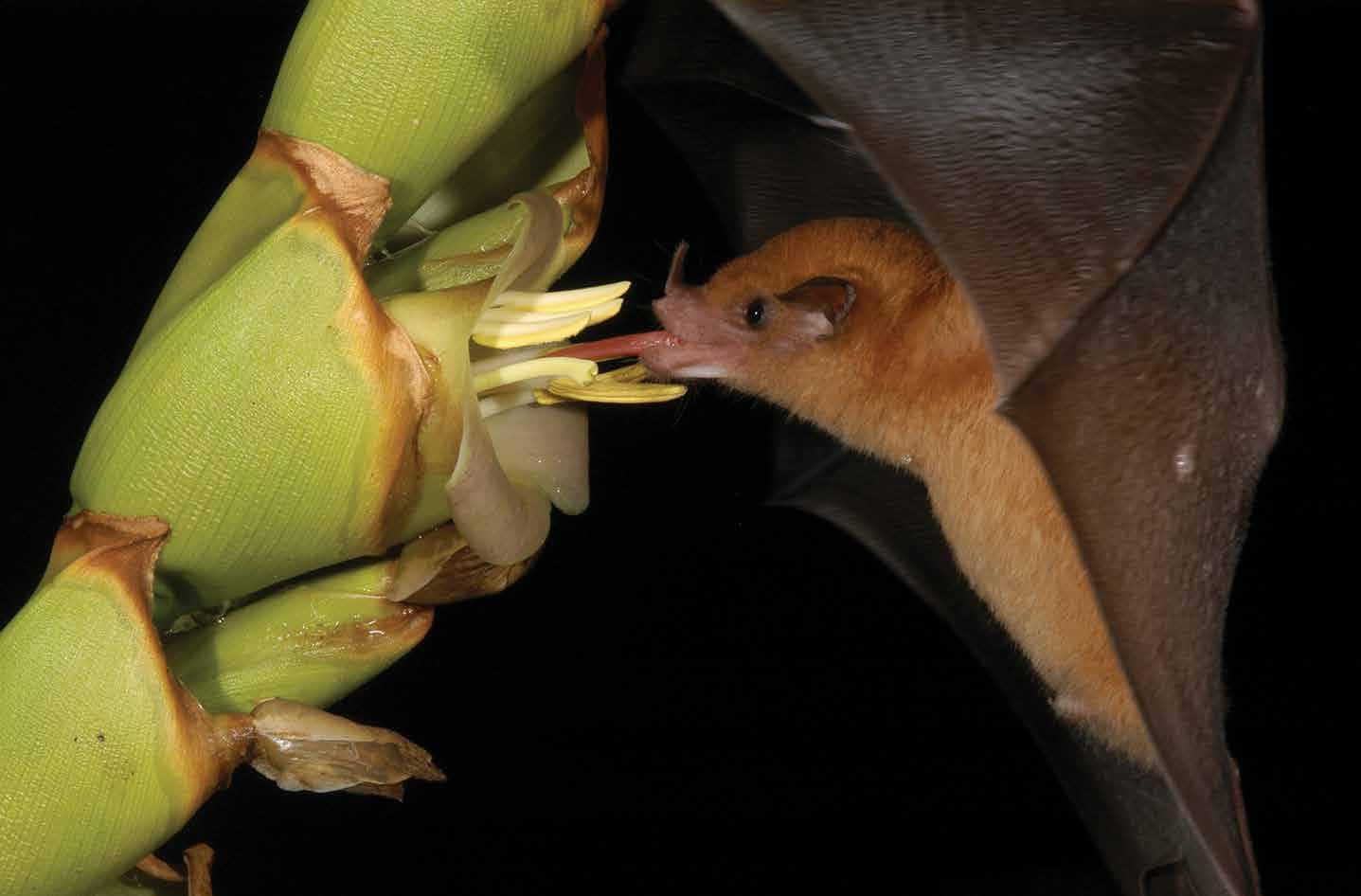
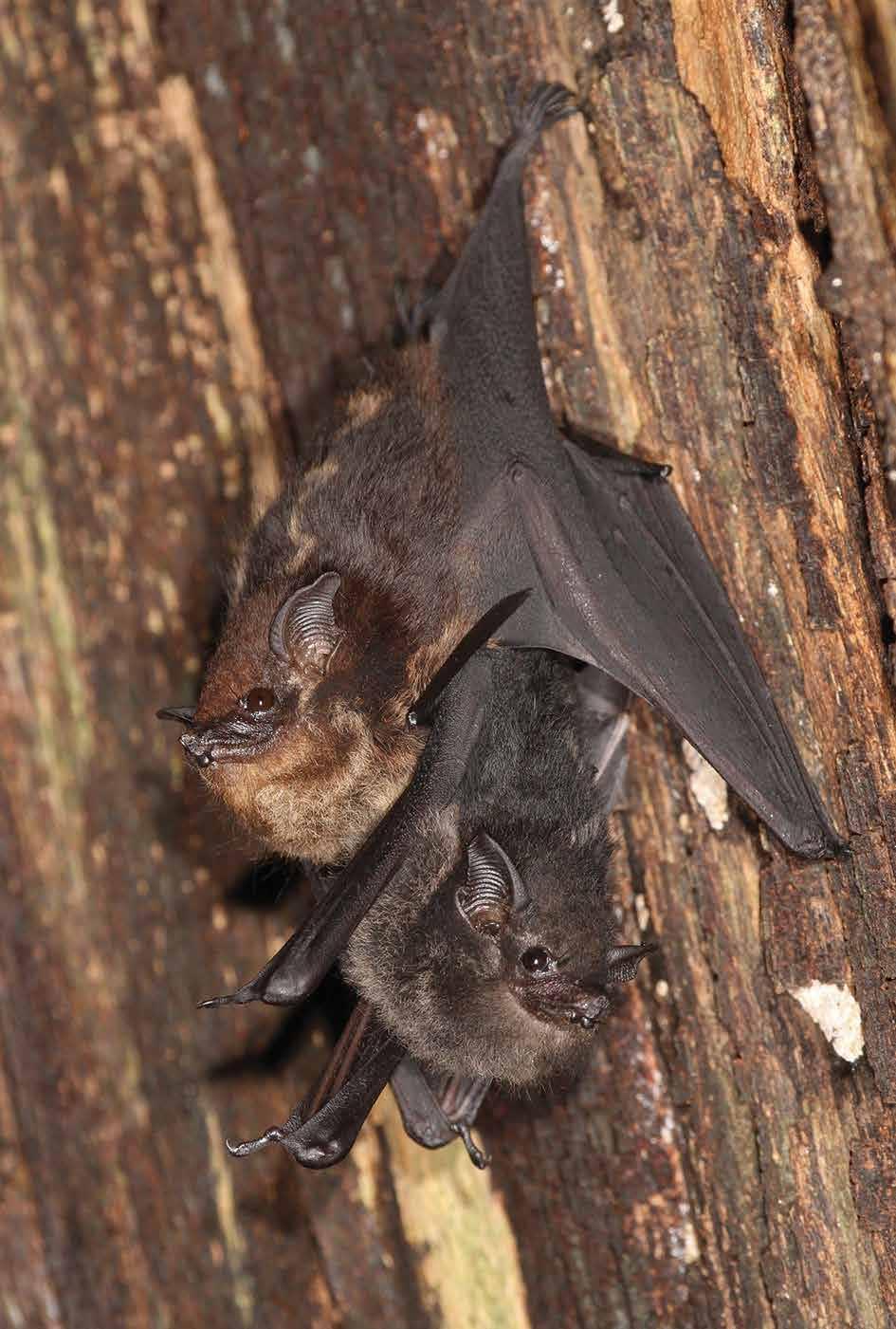
Social Influences on Foraging Behaviour
Dr Knörnschild’s research is by far not limited to bat acoustics. Another focus of her group is the acquisition of novel foraging behaviours through social influences. To do this, Dr Knörnschild’s group studies the foraging behaviour of wild Neotropical bats that feed on fruits or nectar. While individual learning certainly plays a huge role in optimising the foraging efficiency of bats and is intensely studied because of it, social influences on bats’ foraging behaviour have received much less attention so far. Social learning happens whenever individuals acquire knowledge by interacting with others or observing them from a distance. Since frugivorous and nectarivorous bats roost gregariously and feed on clumped resources in the forest (i.e. fruiting or flowering plants), they have many opportunities to interact with conspecifics at their roosts or their foraging grounds. ‘We investigate whether wild bats acquire novel foraging preferences or techniques by interacting with experienced conspecifics and how this new knowledge spreads in their social group,’ Dr Knörnschild says. ‘This offers the exciting possibility to study the cultural transmission of novel foraging behaviours in the wild.’ Moreover, Dr Knörnschild’s group studies various other important aspects of socially influenced foraging strategies, namely the temporal defence of food patches by dominant individuals, the recruitment of conspecifics to valuable food sources, and vertical learning of foraging behaviour from mother to offspring.
Future Directions
Dr Knörnschild plans to put more research emphasis on the cognitive accomplishments of bats in the future. Specifically, Dr Knörnschild’s group will study how individual variation in cognition is related to consistent among-individual differences in behaviour (i.e. personality). It is conceivable that proactive bats, which are bold and rapid explorers, are faster but less accurate in cognitive tasks than reactive bats, but the latter might be better suited to deal with changes in their environment. Moreover, Dr Knörnschild’s group will investigate the influence of sleep, or the lack thereof, on the consolidation of newly acquired information in bats’ long-term memory. Sleep deprivation should interfere with acquiring new information and with remembering it later, no matter whether the information has been gained through individual or social learning. Furthermore, Dr Knörnschild will conduct interactive playback experiments with wild bats to study whether bats are capable of multimodal recognition of individual group members and to which extent bats have knowledge about third-party relationships between conspecifics. These findings will help assessing whether bats possess a ‘theory of mind’, i.e. whether they can attribute mental states – attention, intents, knowledge, etc. – to oneself and others, which would allow them to explain and predict the behaviour of conspecifics. ‘I am convinced that we, as a scientific community, have only just tapped the surface of what bats are capable of,’ Dr Knörnschild says. ‘Learning more about their communicative and cognitive abilities will be especially advantageous for comparative studies, because bats are such a speciose and highly diverse mammalian taxon.’
Meet the researcher
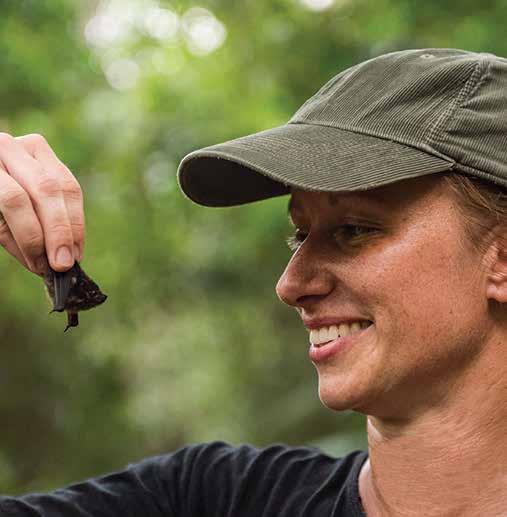
Dr Mirjam Knörnschild
Animal Behaviour Lab
Free University Berlin
Berlin, Germany
Dr Mirjam Knörnschild achieved her PhD in Zoology at the University of Erlangen-Nuremberg in Germany under the supervision of Otto von Helversen. Afterwards, Dr Knörnschild held a 5-year position as a postdoctoral researcher at the Institute of Experimental Ecology at Ulm University, working in the labs of Elisabeth Kalko and Simone Sommer. Since 2015, Dr Knörnschild is a Heisenberg Fellow leading an independent research group at the Free University Berlin in Germany and a Research Associate of the Smithsonian Tropical Research Institute in Panama. Dr Knörnschild’s research group studies communication and cognition in bats, focusing mainly on wild bats in Costa Rica, Panama and South Africa.
CONTACT
E: mirjam.knoernschild@gmail.com
W: http://mirjam-knoernschild.org/
FUNDING
German Science Foundation
Baden-Württemberg Stiftung
Robert Bosch Stiftung
National Geographic
Studienstiftung des Deutschen Volkes
KEY COLLABORATORS
Martina Nagy, Animal Behaviour Lab, Free University Berlin, Germany
Frieder Mayer, Leibniz Institute for Evolution and Biodiversity Science (Museum für Naturkunde), Berlin, Germany
Constance Scharff, Animal Behaviour Lab, Free University Berlin, Germany
Marco Tschapka, Institute of Evolutionary Ecology and Conservation Genomics, Ulm University, Germany
Rachel Page, Smithsonian Tropical Research Institute (STRI), Panama
PHOTO CREDITS
Vocalising Saccopteryx bilineata. Credit: Michael Stifter
Foraging Carollia perspicillata. Credit: Michael Stifter
Foraging Lonchophylla robusta. Credit: Marco Tschapka
Dr Knörnschild recording bats. Credit: Claudia Rahlmeier
Saccopteryx bilineata mother and pup. Credit: Michael Stifter
Dr Knörnschild holding a bat. Credit: Claudia Rahlmeier



